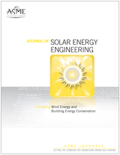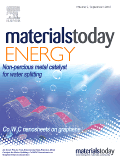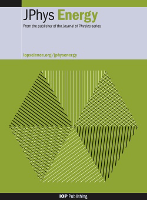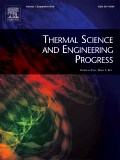
JOURNAL OF SOLAR ENERGY ENGINEERING-TRANSACTIONS OF THE ASME
Scope & Guideline
Advancing Sustainable Energy Solutions Through Cutting-Edge Research.
Introduction
Aims and Scopes
- Solar Thermal Systems:
Research on various solar thermal technologies, including designs, performance evaluations, and optimization strategies for solar collectors, thermal storage systems, and solar-driven heat pumps. - Photovoltaic Technologies:
Investigation into solar photovoltaic systems, including performance analysis, modeling, and innovative configurations to enhance energy conversion efficiency and integration with other energy systems. - Thermal Energy Storage Solutions:
Development and analysis of thermal energy storage methods, including phase change materials, molten salts, and innovative storage configurations to improve the dispatchability of solar energy. - Thermodynamic Analysis and Optimization:
Application of thermodynamic principles to assess and optimize the performance of solar energy systems, including exergoeconomic analysis and system integration for enhanced efficiency. - Innovative Materials and Coatings:
Exploration of advanced materials and coatings that improve the thermal and optical performance of solar energy systems, including nanomaterials, composites, and reflective coatings. - Modeling and Simulation Techniques:
Utilization of advanced modeling and simulation techniques to predict the performance of solar energy systems, including computational fluid dynamics (CFD) and machine learning approaches. - Environmental and Economic Assessments:
Integrated studies focusing on the environmental impact and economic viability of solar energy technologies, including lifecycle assessments and cost-benefit analyses.
Trending and Emerging
- Advanced Energy Storage Technologies:
There is a growing emphasis on innovative energy storage solutions, such as thermochemical storage and hybrid systems, reflecting the need for reliable and efficient energy storage in solar applications. - Integration of Artificial Intelligence and Machine Learning:
The application of AI and machine learning techniques in optimizing solar energy systems and predicting performance has emerged as a significant trend, showcasing the intersection of technology and renewable energy. - Hybrid Renewable Energy Systems:
Research focusing on the integration of solar energy with other renewable sources, such as wind and biomass, to create hybrid systems that enhance overall energy yield and reliability. - Environmental Impact and Sustainability Assessments:
Increased attention to the environmental impacts of solar technologies, including lifecycle assessments and sustainable practices, aligns with global sustainability goals. - Innovations in Photovoltaic Materials:
Emerging studies on new photovoltaic materials, including perovskites and organic photovoltaics, highlight the journal's focus on cutting-edge research to improve solar energy conversion efficiency. - Dynamic Solar Energy Systems:
The exploration of dynamic and tracking solar systems, which adjust to optimize energy capture throughout the day, reflects advancements in solar technology design.
Declining or Waning
- Conventional Solar Water Heating Systems:
Research on traditional solar water heating systems has diminished, likely due to the rise of more efficient technologies and integrated systems that offer better performance and cost-effectiveness. - Basic Photovoltaic Performance Studies:
Studies focusing solely on the basic performance metrics of photovoltaic systems without considering advanced integration or optimization strategies have seen a decline, as the field moves towards more complex and multifaceted analyses. - Static Solar Collector Designs:
There is a waning interest in static designs of solar collectors, as dynamic and tracking systems are increasingly favored for their superior performance in energy capture. - Single-Effect Absorption Refrigeration Systems:
Research on single-effect systems has become less frequent, possibly due to a shift towards more efficient multi-effect systems and alternative cooling technologies. - Basic Heat Transfer Analysis Without Optimization:
Simple heat transfer analyses without optimization considerations are becoming less common as researchers focus on more integrated approaches that consider system performance holistically.
Similar Journals

Energy Materials
Empowering Energy Technologies Through Cutting-Edge Research.Energy Materials is a pioneering journal published by OAE PUBLISHING INC, dedicated to the dynamic field of energy materials science and engineering. With a focus on advancing knowledge related to materials used in various energy applications such as batteries, fuel cells, and solar cells, this open-access journal aims to disseminate cutting-edge research and innovative methodologies to a global audience. By offering a platform for original research, reviews, and case studies, Energy Materials plays a crucial role in bridging the gap between materials science and energy technology, facilitating the development of sustainable energy solutions. Researchers, professionals, and students alike will find invaluable insights in its pages, fostering advancements in this essential sector. To explore the latest developments in energy materials, visit Energy Materials at OAE PUBLISHING INC.

Archives of Thermodynamics
Elevating Understanding of Energy TransformationsArchives of Thermodynamics is a reputable journal dedicated to the field of thermodynamics, published by the esteemed POLISH ACADEMY OF SCIENCES. With a robust history since its inception in 2003, this journal serves as a critical platform for disseminating high-quality research aimed at advancing knowledge and technology in thermodynamic systems and processes. Recognized for its contribution to the field, it holds a Q3 ranking in the Physics and Astronomy (miscellaneous) category as of 2023, with a respectable Scopus rank of #148 out of 243, placing it within the 39th percentile. Although it follows a traditional access model, the journal's commitment to scholarly excellence ensures that researchers, professionals, and students alike can benefit from its rich archives and ongoing discussions within the scientific community. Situated in Warsaw, Poland, the journal not only reflects a regional dedication to scientific progress, but also engages with global audiences interested in the evolving landscape of thermodynamic research.

Advances in Energy Research
Exploring the Frontiers of Renewable Resources and Technologies.Advances in Energy Research is a prominent journal dedicated to the exploration and advancement of energy technologies and sustainable practices. Published by TECHNO-PRESS, this journal serves as a vital platform for researchers, professionals, and students in the energy field, featuring innovative studies and reviews that contribute to the body of knowledge surrounding energy efficiency, renewable resources, and the integration of new technologies. The journal holds a significant position in energy research and aims to facilitate the dissemination of groundbreaking findings and ideas that are pivotal for the transition toward a more sustainable energy future. Located in South Korea, with an ISSN of 2287-6316, it embraces an open access philosophy that ensures widespread availability of its content, further enhancing its impact in the academic community.

ISI Bilimi ve Teknigi Dergisi-Journal of Thermal Science and Technology
Unveiling Breakthroughs in Thermal MethodologiesISI Bilimi ve Teknigi Dergisi-Journal of Thermal Science and Technology, published by the Turkish Society of Thermal Sciences and Technology, serves as a pivotal platform for disseminating cutting-edge research in the fields of thermal science, engineering, and materials science. With an ISSN of 1300-3615, this journal not only addresses critical advancements from 2008 to 2013 and 2015 to 2023, but also operates under the auspices of rigorous peer review, contributing to its reputable standing in academia. As a Q4 ranked journal in various disciplines including Atomic and Molecular Physics, Engineering, and Materials Science, it offers researchers and professionals essential insights, though it does not currently operate under an open access model. Situated in Ankara, Turkey, this journal is key to fostering collaboration and innovation among scholars, making it an indispensable resource for students and professionals eager to engage with the latest thermal science methodologies and technologies.

Journal of Power Technologies
Catalyzing Research for a Greener FutureJournal of Power Technologies is a prestigious academic journal dedicated to advancing the field of power engineering, specifically focusing on innovative technologies and methodologies related to energy production, transmission, and efficiency. Published by the renowned Warsaw University of Technology, Institute of Heat Engineering, this journal is committed to disseminating high-quality research that addresses the challenges and opportunities in the energy sector. Although currently not open access, the journal provides extensive subscription options for access to its comprehensive range of articles. With an emphasis on original research, case studies, and reviews, the Journal of Power Technologies serves as a vital resource for researchers, practitioners, and students alike, aiming to shape the future of sustainable power systems and contribute significantly to the global energy discourse. The journal continues to foster an academic environment where innovation in power technology is highlighted and celebrated, supporting the ongoing quest for sustainable energy solutions.

Materials Today Energy
Driving Discoveries in the World of Energy MaterialsMaterials Today Energy is a premier journal published by Elsevier, focusing on the interdisciplinary field of energy materials. With an ISSN of 2468-6069, the journal is renowned for its impactful research as evidenced by its impressive Q1 quartile rankings in multiple categories including Energy Engineering and Power Technology, Fuel Technology, and Renewable Energy. It stands out with strong Scopus rankings, highlighting its significance in the respective research communities, such as being ranked 3rd in Nuclear Energy and Engineering. Established from 2016 to 2024, the journal aims to provide a platform for innovative research that addresses the global demands for sustainable energy solutions. Although it is not open access, Materials Today Energy is accessible to a broad audience, encouraging collaborations among researchers, professionals, and students in the pursuit of advancing materials science and energy technologies. This makes it an essential resource for those looking to remain at the forefront of discoveries that shape the future of energy.

Transactions of the Korean Society of Mechanical Engineers B
Fostering collaboration and knowledge in mechanical systems.Welcome to the Transactions of the Korean Society of Mechanical Engineers B, a pivotal journal dedicated to advancing the field of mechanical engineering. Published by the esteemed Korean Society of Mechanical Engineers, this journal serves as a platform for the dissemination of innovative research and practical applications in mechanical engineering and related disciplines. With a focus on fostering knowledge exchange and collaboration, the journal publishes original research articles, reviews, and technical notes that contribute to the understanding and evolution of mechanical systems and technologies. The Transactions of the Korean Society of Mechanical Engineers B, which has been in circulation since 2007 and spans through 2024, is categorized within the Q4 quartile of mechanical engineering rankings and is indexed by Scopus, making it a valuable resource for researchers and professionals aiming to stay abreast of the latest developments in the field. Although it is not open access, its rigorous peer-review process ensures the integrity and quality of the published work, making it essential reading for academics and practitioners alike.

Journal of Physics-Energy
Pioneering Discoveries at the Intersection of Energy and MaterialsJournal of Physics-Energy, published by IOP Publishing Ltd, is a leading Open Access journal that serves as a dynamic platform for the dissemination of high-quality research within the interdisciplinary realms of energy, materials science, and materials chemistry. Since its inception in 2019, the journal has gained remarkable recognition, achieving a prestigious Q1 ranking in multiple categories in 2023, highlighting its impact within these rapidly evolving fields. With its Scopus Ranks, placing it in the top 10% of journals for General Energy and within the top 20% for Materials Science disciplines, it reflects the commitment to excellence in research and innovation. Conveniently based in the United Kingdom, the journal is designed to facilitate collaboration and knowledge exchange among researchers, professionals, and students dedicated to advancing the understanding of energy technologies and materials science. The open access model ensures that cutting-edge research is freely available, promoting global accessibility and engagement with the latest scientific advancements.

Thermal Science and Engineering Progress
Transforming thermal challenges into engineering progress.Thermal Science and Engineering Progress is a premier peer-reviewed journal published by ELSEVIER, established to bridge the gap between theoretical and practical advancements within the fields of thermal science and engineering. Since its inception in 2017, this esteemed journal has rapidly ascended to a Q1 ranking in the category of Fluid Flow and Transfer Processes, positioning it among the top 17 of 96 journals in this discipline, as reflected by its impressive 82nd percentile ranking in Scopus. With a focus on disseminating high-impact research, Thermal Science and Engineering Progress aims to foster innovation and collaboration by publishing cutting-edge studies that address both contemporary challenges and future directions in thermal management, energy conversion, and heat transfer technologies. Researchers, professionals, and students alike are invited to explore the wealth of knowledge contained within its pages, which are accessible from its headquarters in Amsterdam, Netherlands. This journal plays a critical role in advancing technological progress and fostering a deeper understanding of thermal processes, making it an essential resource for anyone dedicated to these crucial areas of study.

Journal of Energy Storage
Empowering research in sustainable energy practices.Welcome to the Journal of Energy Storage, a premier publication dedicated to advancing the science and technology of energy storage systems. Published by ELSEVIER in the Netherlands, this esteemed journal boasts a significant impact in the field, categorized as Q1 in Electrical and Electronic Engineering, Energy Engineering and Power Technology, and Renewable Energy, Sustainability and the Environment for 2023. With a commitment to disseminating high-quality research, the journal provides a platform for the latest innovations and findings, covering a broad spectrum of topics from battery technologies to thermal energy storage. As a must-read for researchers, professionals, and students alike, the Journal of Energy Storage facilitates vital discussions that shape the future of sustainable energy practices. While presently offering select access options, the journal continues to expand its reach and influence within the academic community, encouraging submissions that drive forward our understanding of energy solutions. Discover the forefront of energy storage research and contribute to a world increasingly reliant on efficient energy management.